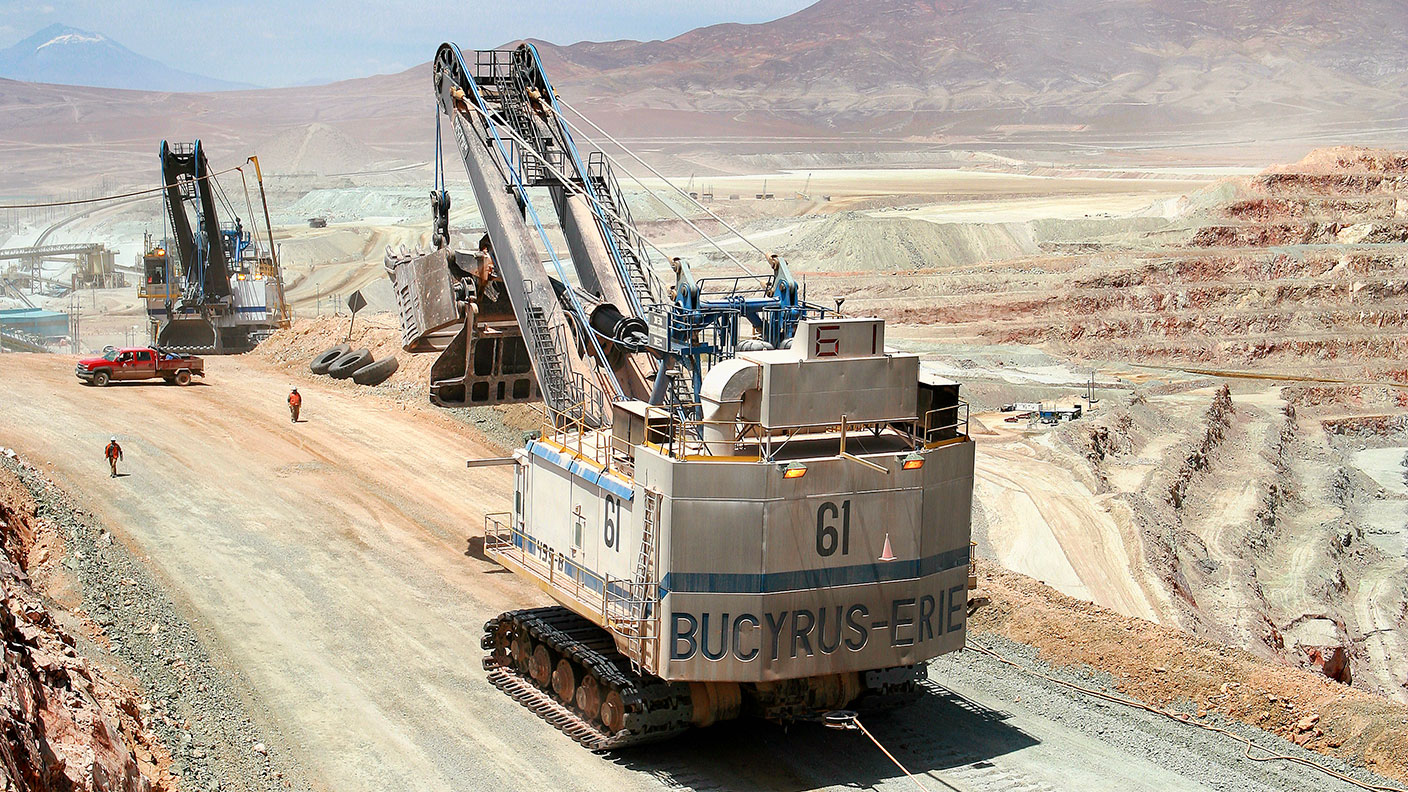Should you go prospecting?
The resources business can offer tantalising prospects for investors. But don't get caught out, says Matthew Partridge. Here's what to look out for.


Few industries dangle the prospect of huge speculative gains in front of an investor more tantalisingly than the resources business. If you can find a mining company that "strikes it rich",it can be like winning the lottery.
The downside is that many miners either fail, or produce little or no returns for their investors. Even worse, the sector is notorious for scams. The most prominent example was Canadian miner Bre-X (the subject of a recent film, Gold, pictured), which achieved a market capitalisation of $6bn on the back of a reported gold discovery in Indonesia, only to be exposed as a fraud. Here are some red flags to watch out for.
Location: much of the world's accessible natural resources are found in emerging markets, so avoiding all political risk is difficult. However, conflict, sanctions, or government expropriation are all risks to be aware of in many countries. A lack of transparency also makes it easier for unscrupulous operators to conceal fraud. So do your research: do other, established miners operate in the area?Is there a history of sudden tax changes or expropriation? What about war? Also ensure that the infrastructure (in terms of labour and transport links) is adequate.
MoneyWeek
Subscribe to MoneyWeek today and get your first six magazine issues absolutely FREE

Sign up to Money Morning
Don't miss the latest investment and personal finances news, market analysis, plus money-saving tips with our free twice-daily newsletter
Don't miss the latest investment and personal finances news, market analysis, plus money-saving tips with our free twice-daily newsletter
Management: you cannot monitor the day-to-day activities of a mining company in the same way that you can walk into a branch of Marks & Spencer to test the customer experience. So you have to be confident that the management team is honest, and knows what it is doing. Look into the history of the top executives. If their track record is patchy, the chief executive is stuffing the board with friends, or the company has a lot of vacant positions, give it a miss. Also check whether board members are holding onto shares or quietly selling out.
Spending: a miner that thinks it has a good chance of striking it rich will be investing in production or exploration, and keeping unnecessary costs such as administration and staff salaries to a minimum. If you dig into the accounts and find large payouts for executives, then it is pretty clear that the interests of shareholders aren't its top priority. Be particularly wary if the group is spending large sums on promoting the firm to investors, while doing little actual work.
Debt: the converse of spending too little is taking on too much debt. Commodity prices are highly volatile, whereas it takes several years for a mine to go from exploration to production. So it makes little sense to borrow heavily when prices down the line may not be high enough to make that mine viable. So avoid miners that have taken on too much debt and make sure any group you plan to invest in has enough cash on hand to sustain itself until it becomes self-sufficient.
Get the latest financial news, insights and expert analysis from our award-winning MoneyWeek team, to help you understand what really matters when it comes to your finances.

-
 Investors will reap long-term rewards from UK equities
Investors will reap long-term rewards from UK equitiesOpinion Nick Train, portfolio manager, Finsbury Growth & Income Trust, highlights three UK equities where he’d put his money
-
 The graphene revolution is progressing slowly but surely
The graphene revolution is progressing slowly but surelyEnthusiasts thought the discovery that graphene, a form of carbon, could be extracted from graphite would change the world. They might've been early, not wrong.
-
 These 2 stocks are set to soar
These 2 stocks are set to soarTips The returns from these two aluminium and tin stocks could be spectacular when the commodity cycle turns says David J Stevenson.
-
 The best ways to buy strategic metals
The best ways to buy strategic metalsTips Weaker prices for strategic metals in the alternative-energy sector are an investment opportunity, says David Stevenson. Here, he picks some of the best ways to buy in.
-
 A lesson for investors from a ill-fated silver mine
A lesson for investors from a ill-fated silver mineAnalysis Mining methods may have changed since the industry’s early days, but the business hasn’t – digging ore from the ground and selling it at a profit. The trouble is, says Dominic Frisby, the scams haven't changed either.
-
 The natural resources industry is in a tight spot – which is bad news for the rest of us
The natural resources industry is in a tight spot – which is bad news for the rest of usOpinion The natural resources industry is in a bind. We need it to produce more energy and metals, but it has been starved of investment, plagued by supply chain issues, and hobbled by red tape. That’s bad news for everyone, says Dominic Frisby.
-
 How to invest in the copper boom
How to invest in the copper boomTips The price of copper has slipped recently. But that’s temporary – the long-term outlook is very bullish, says Dominic Frisby. Here, he explains the best ways to invest in copper.
-
 Why investors should consider adding Glencore to their portfolios
Why investors should consider adding Glencore to their portfoliosTips Commodities giant Glencore is well placed to capitalise on rising commodity prices and supply chain disruption, says Rupert Hargreaves. Here’s why you should consider buying Glencore shares.
-
 How to invest in the multi-decade boom in industrial metals
How to invest in the multi-decade boom in industrial metalsTips The price of key industrial metals has already begun to rise. The renewable energy transition will take them higher, says David Stevenson. Here's how to profit.
-
 Avoid China’s stockmarket – here’s what to invest in instead
Avoid China’s stockmarket – here’s what to invest in insteadOpinion China’s stockmarket is not a good place for investors to be. But you can't just ignore the world's second-largest economy, says Dominic Frisby. Here, he picks an alternative China play.